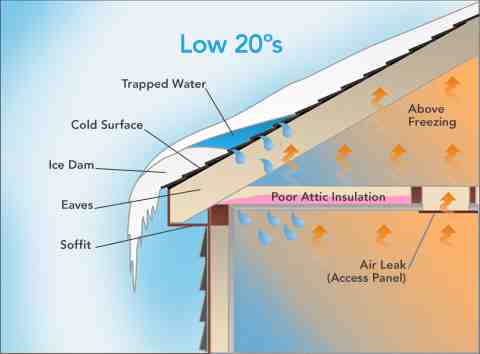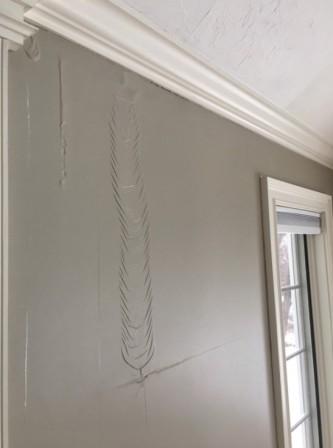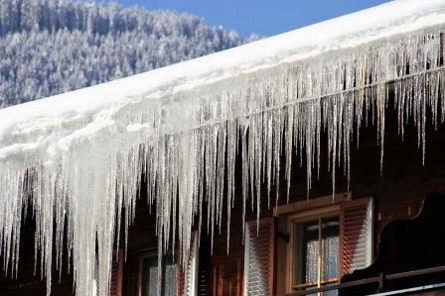Winter can be a beautiful season, but it also brings unique challenges for homeowners. One of the most common winter issues in Massachusetts is the formation of ice dams. These ridges of ice that form at the edge of your roof can prevent melting snow from draining properly, potentially leading to significant water damage inside your home. In this article, we’ll explore what causes ice dams and share practical ways to protect your home from their destructive effects.
What Causes Ice Dams?
Ice dams form when heat escapes from your home and warms the roof, causing snow to melt. As the melted snow flows down the roof, it can refreeze at the colder eaves, creating a dam of ice. Over time, water pooling behind the dam can seep under shingles and into your home, leading to water leaks and causing water damage to walls, ceilings, insulation, and more. Left unaddressed, this can result in costly repairs and the need for professional water damage restoration services.

Leak Prevention Tips to Avoid Ice Dams
The key to preventing leaks from ice dams is to keep your roof cold. Here are several effective strategies to protect your home:
- Improve Attic Insulation
- Proper insulation in your attic can help maintain a consistent temperature and reduce heat loss. Focus on areas where warm air is likely to escape, such as around vents, recessed lighting, chimneys, and access hatches. By minimizing heat transfer to your roof, you can prevent snow from melting and refreezing.
- Seal Air Leaks
- Air leaks can significantly contribute to heat escaping into your attic. Use caulking or weather stripping to seal gaps around light fixtures, pipes, and other openings. This simple step can make a big difference in reducing ice dam formation.
- Ensure Proper Ventilation
- A well-ventilated attic helps regulate temperature and keeps your roof cool. Install soffit and ridge vents to allow cold air to circulate and warm air to escape. This balance reduces the risk of snow melting unevenly on your roof.
- Remove Snow from Your Roof
- Use a roof rake or a similar tool to safely remove snow from your roof after a heavy snowfall. Clearing snow reduces the amount of melting and refreezing that leads to ice dams. Be cautious to avoid damaging your shingles or gutters in the process.
- Clean Your Gutters
- Before winter arrives, ensure your gutters and downspouts are clear of debris. Proper drainage allows melting snow to flow off your roof and away from your home, reducing the risk of ice dams and subsequent water damage.
- Invest in Heated Cables
- Heated cables can be installed along the edges of your roof to melt snow and ice, preventing dams from forming. While this is a more costly option, it can be highly effective for homes prone to ice dams.
Addressing Water Damage from Ice Dams
Despite your best efforts, ice dams can still form under extreme winter conditions. Act quickly if you notice signs of water damage, such as stains on your ceilings or peeling paint. Professional water damage restoration services can help mitigate the damage and prevent further issues like mold growth. We have the expert tools and experience to dry out affected areas, repair structural damage, and restore your home to its original condition.

Ice dam water damage sign: bubbling wall paint
Protecting your home from ice dams requires proactive maintenance and quick action. By improving insulation, sealing air leaks, ensuring proper ventilation, and removing snow from your roof, you can minimize the risk of ice dams and the water damage they cause. If you do experience damage, don’t hesitate to contact ServiceMaster Dynamic Cleaning for water damage restoration. Winter weather may be unpredictable, but with the right precautions, you can safeguard your home and enjoy the season worry-free.



